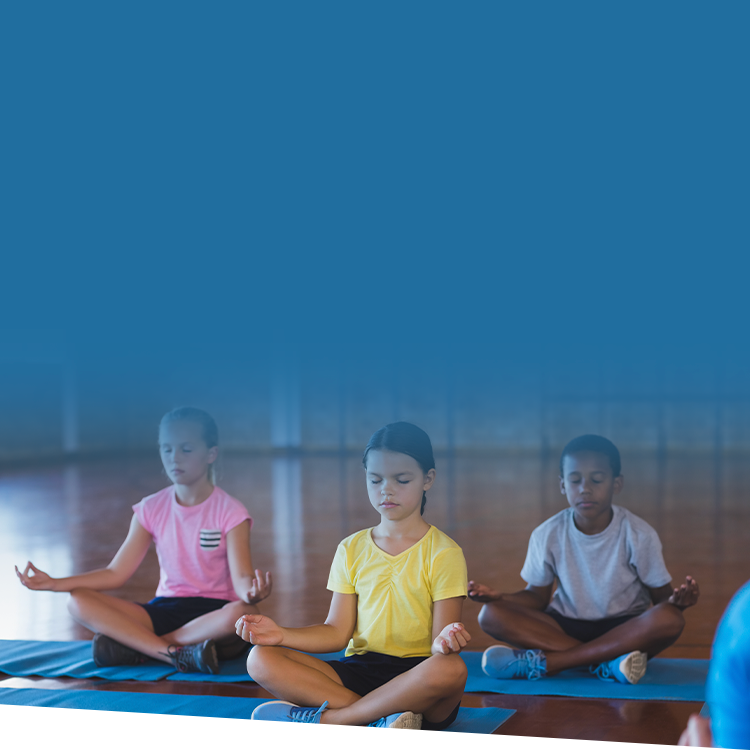Educators in lower school know one thing is true: The emotions of young children are unpredictable. This is because lower school students’ brains are not yet fully developed, meaning their tendency to act on impulse is much higher.
Their inability to manage emotions has a great impact on learning. Additionally, classrooms prone to emotional blow-ups distract students from their studies.
But students’ impulsive behaviors are not due to personal failings. Mostly the overwhelming emotions (dysregulation) they’re experiencing are due to biology, not personality. As a teacher, you can provide your students with the tools to learn how to regulate these emotions.
Here’s how incorporating movement can help students regulate their emotions—leading to calmer students and, in turn, a more productive educational environment for the classroom.
What Is Emotional Regulation?
Emotional regulation is the ability to manage one’s emotions and respond appropriately to everyday challenges. Helping your students manage their emotions supports better decision-making and academic achievement.
To teach students how to regulate their emotions, consider these four steps when they’re experiencing an upsetting situation.
- Identify the emotion: To help a student identify an emotion, ask them what physical changes they are experiencing. Is their heart racing? Are their fists clenched? Remind them that feelings are messengers telling us what we need. By asking them to focus on the physical sensations, you empower them to recenter and understand what’s happening—it becomes biological rather than personal.
- Name the emotion: Once they identify the emotion, they should then work to name it. When asked how they’re feeling, many students in an emotional crisis will say, “I don’t know.” Instead, redirect them toward a particular emotion. For example, if they say their heart is racing, does that mean they’re feeling nervous? If they identified their fists as clenched, does that mean they’re feeling angry?
- Express the emotion: The next step is to encourage the student to articulate the emotion and think about the reason for that emotion. If a student feels slighted by a classmate who took their toy, we don’t want them to say they’re angry because their classmate “is a jerk.” A better statement for the student to say would be, “I’m angry because they took my toy without asking.”
- Manage the emotion: Finally, managing the emotion requires the student to choose a healthy coping mechanism. Reactions—like kicking, punching, or grabbing—will only lead to more problems. Instead, help them find solutions that not only address the problem, but also make them feel in control. If that student is feeling angry that their toy was stolen, suggest appropriate ways to solve the problem, like asking for the toy back or explaining the situation to the teacher.

Tune in to live webinars every week during the school year to get specific, research-backed insight you can immediately apply at your school.
Movement and Emotional Regulation
While the four steps outlined above might help calm a student in crisis, it’s also a good idea to create opportunities for students to learn to calm themselves before problems arise. One of the best ways to do this is by incorporating movement into the classroom.
Motion creates change in the nervous system. Movement has many physical benefits, but one of the greatest benefits is for the brain—creating positive effects on mood, vitality, and alertness, and increasing feelings of well-being.
Here are a few simple movement activities that can be worked into any classroom.
Dancing
Kids love to dance! Classroom dance parties are opportunities for teachers to illustrate key components of emotional regulation. Teachers can encourage students to move their bodies with the beat, but it’s also an opportunity to identify how they’re feeling.
Playlists can feature songs with different melodies, tempos, and feelings, so students can demonstrate different reactions to the music. This is a great activity before winding down for a nap or quiet time—students can get out “the sillies” and blow off some steam.
Breathing
Taking short, quick breaths is like signaling your brain that something is wrong. In fact, research shows a state of anxiety can be induced in a person with no external reason, just by instructing them to breathe rapidly. This is why deep, measured breaths are important—especially when children are upset. Deep breathing jump-starts the parasympathetic nervous system—a network of nerves that relaxes your body after periods of stress or danger—promoting feelings of peace and calm.
The parasympathetic nervous system balances your sympathetic nervous system, and it also produces feel-good hormones such as dopamine, serotonin, and oxytocin. These chemicals are natural mood-boosting neurotransmitters that help ease the symptoms of stress and anxiety.
For example, oxytocin—known as the love hormone—can help children feel safe in social situations. This hormone also aids the secretion of gamma-aminobutyric acid (GABA) whose principal role is reducing excitability throughout the nervous system.
Check out some of these breathing exercises that are simple enough for children, like Blow Out the Candle or Box Breathing. All are effective—the most important thing is you’re asking students to quiet themselves and focus on their breathing.
Yoga
Yoga in the classroom is a combination of movement (dancing) and breathing. You might assume teaching yoga to students requires a certificate or advanced training, but that’s simply not the case.
You can use classroom yoga to encourage students to calm their bodies, focus on their breathing, and notice their feelings. If space is limited, don’t worry about laying foam mats on the ground—poses like Cat/Cow and Seated Pigeon can be done at their desks.
Incorporating exercise and movement throughout the school day makes students less fidgety and more focused on learning. Improving on-task behavior and reducing classroom management challenges are among the most obvious benefits of adding physical activities to your teaching toolkit—supporting your overall school wellness.
*Content courtesy of D&G Wellness.





